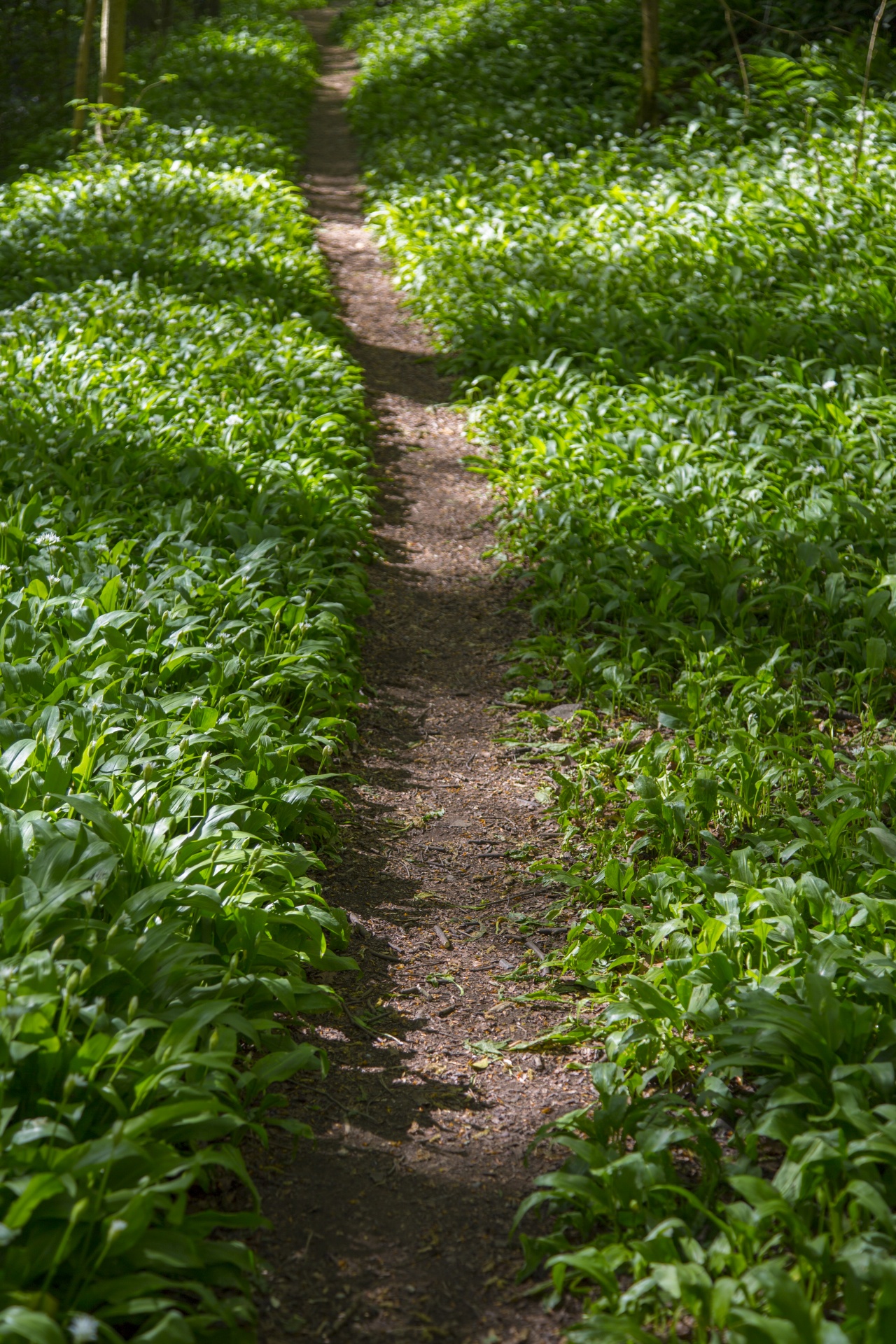Discover The Wild Flavors: A Guide To Sourcing Wild Garlic
Are you ready to embark on a culinary adventure and discover the secret behind foraging for wild garlic? Join us as we explore the fascinating world of this fragrant herb, revealing the techniques and knowledge needed to enhance your culinary creations.
Foraging for wild garlic can be a rewarding experience, but it’s essential to approach it with caution. Misidentification can lead to unpleasant consequences, so it’s crucial to learn the identifying characteristics of this herb to ensure a safe and enjoyable foraging expedition.
Wild garlic, also known as ramsons or bear’s garlic, is a versatile herb that adds a distinct garlicky flavor to dishes. Its broad, flat leaves resemble lily of the valley, but the telltale garlic scent sets it apart. The optimal season for foraging wild garlic is early spring, when the leaves are tender and the flavor is at its peak.

Identifying Wild Garlic: A Guide to Foraging
To identify wild garlic accurately, pay attention to specific characteristics. The leaves are typically 10-30 cm long and 2-5 cm wide, with a pointed tip and a smooth margin. The veins on the leaves run parallel to each other, creating a distinctive pattern. The flowers, which bloom in late spring, are white and star-shaped, arranged in a cluster atop a stalk.
Wild garlic grows abundantly in woodlands, meadows, and along riverbanks. It prefers moist, shady environments and can often be found in areas with partial sunlight. When foraging, use a sharp knife or scissors to cut the leaves at the base, leaving the bulb intact to ensure future growth.

History and Myth of Wild Garlic: A Culinary and Cultural Legacy
Wild garlic has a rich history and cultural significance. In ancient Greece, it was believed to enhance athletic performance and was often consumed by athletes before competitions. In medieval Europe, wild garlic was used as a medicinal herb to treat various ailments, including stomach disorders and respiratory infections.
Throughout history, wild garlic has been revered for its culinary and medicinal properties. Its unique flavor has made it a staple ingredient in many cuisines, adding zest to soups, stews, salads, and even as a condiment for meat and fish dishes.

Hidden Secrets of Wild Garlic: Unlocking Its Medicinal Benefits
Beyond its culinary applications, wild garlic possesses remarkable medicinal properties. It is a rich source of vitamins, minerals, and antioxidants, including vitamin C, iron, and manganese. Studies have shown that wild garlic has antibacterial, antiviral, and anti-inflammatory effects, making it a potential natural remedy for various health conditions.
Wild garlic has been traditionally used to treat digestive issues, respiratory infections, and skin conditions. It is believed to boost the immune system, reduce cholesterol levels, and protect against certain types of cancer. However, it’s important to note that consuming large amounts of wild garlic can have side effects, so it’s best to consult a healthcare professional before incorporating it into your diet.

Recommendations for Foraging and Using Wild Garlic
When foraging for wild garlic, always practice responsible harvesting techniques. Only gather what you need and avoid over-harvesting. Never uproot the bulbs, as this will prevent the plant from reproducing.
To use wild garlic, wash the leaves thoroughly and chop them finely. You can add them raw to salads, dips, and sandwiches for a burst of flavor. Wild garlic can also be sautéed or cooked, adding a garlicky depth to pasta dishes, soups, and stews.

Wild Garlic Pesto: A Culinary Adventure
Wild garlic pesto is a vibrant and flavorful condiment that captures the essence of this herb. To make it, combine wild garlic leaves, olive oil, Parmesan cheese, pine nuts, and salt in a food processor. Pulse until a smooth paste forms. Wild garlic pesto can be used to dress pasta, pizza, or as a spread for sandwiches and wraps.
Wild garlic is a versatile herb that adds a unique and delicious flavor to many dishes. Whether you’re a seasoned forager or just starting to explore the world of wild edibles, discovering the wild flavors of wild garlic is a culinary adventure that will enhance your cooking and deepen your connection to nature.
Tips for Foraging Wild Garlic Safely
Before embarking on a foraging expedition, it’s crucial to ensure your safety. Follow these tips to minimize risks:
- Learn to Identify Wild Garlic Accurately: Study the identifying characteristics of wild garlic to avoid misidentification.
- Forage in Suitable Habitats: Wild garlic thrives in moist, shady environments, so focus your search in woodlands, meadows, and along riverbanks.
- Respect the Environment: Practice responsible harvesting techniques by only gathering what you need and avoiding over-harvesting.
- Cook Wild Garlic Thoroughly: While wild garlic is generally safe to consume raw, cooking it can enhance its flavor and reduce the risk of any potential harmful bacteria.
By following these guidelines, you can enjoy the delights of foraging for wild garlic while ensuring your safety and the preservation of this valuable resource.

Wild Garlic as a Natural Remedy
While wild garlic is primarily known for its culinary uses, it also possesses medicinal properties. Traditionally, it has been used to treat various ailments, including:
- Digestive Issues: Wild garlic has carminative and antispasmodic properties, making it beneficial for relieving indigestion, bloating, and gas.
- Respiratory Infections: Its antibacterial and antiviral compounds can help combat respiratory infections such as colds, flu, and bronchitis.
- Skin Conditions: Wild garlic’s antiseptic and anti-inflammatory properties make it effective for treating skin irritations, acne, and eczema.
It’s important to note that while wild garlic has potential health benefits, it’s essential to consult a healthcare professional before using it as a natural remedy.

Fun Facts about Wild Garlic
Discover some fascinating facts about wild garlic:
- Ancient Medicinal Uses: In ancient Greece, wild garlic was consumed by athletes to enhance their performance.
- Culinary Versatility: Wild garlic can be used in a variety of culinary preparations, from salads to soups, stews, and pestos.
- Wildlife Attraction: The flowers of wild garlic attract pollinators such as bees and butterflies, making it a valuable plant for biodiversity.
- Repellent Properties: Wild garlic is believed to repel insects, including mosquitoes and ticks.
- Symbolism: In some cultures, wild garlic is associated with purification, protection, and good luck.
These fun facts add to the allure of this remarkable herb, making it an intriguing subject for nature enthusiasts and culinary adventurers alike.

How to Identify Wild Garlic
To identify wild garlic accurately, pay attention to the following characteristics:
- Leaves: Broad, flat leaves with a pointed tip and smooth margin, typically 10-30 cm long and 2-5 cm wide. Veins run parallel to each other.
- Flowers: White, star-shaped flowers arranged in a cluster atop a stalk, blooming in late spring.
- Scent: Distinctive garlic scent when leaves are crushed or rubbed.
- Habitat: Moist, shady environments, such as woodlands, meadows, and along riverbanks.
By carefully observing these characteristics, you can confidently identify wild garlic and enjoy its culinary and medicinal benefits.

What If You Misidentify Wild Garlic?
Misidentifying wild garlic can have unpleasant consequences, including stomach upset, vomiting, and diarrhea. If you suspect you have consumed the wrong plant, seek medical attention immediately.
To avoid misidentification, always forage with an experienced guide or refer to reliable identification resources. Never consume any wild plant unless you are absolutely certain of its identity.
Listicle of Wild Garlic Benefits
Here’s a listicle summarizing the key benefits of wild garlic:
- Culinary Delight: Adds a unique garlicky flavor to dishes, enhancing salads, soups, stews, and pestos.
- Medicinal Properties: Traditionally used to treat digestive issues, respiratory infections, and skin conditions.
- Vitamin and Mineral Rich: Contains vitamins C, iron, and manganese.
- Antibacterial and Antiviral Effects: May help combat infections and boost the immune system.
- Potential Cancer-Fighting Properties:

